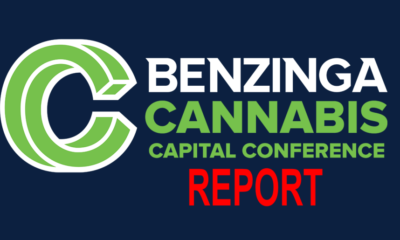I OFTEN HEAR PHRASES like “data-informed” or “data-driven decisions” in the context of strategic planning. They’re correct that having the right data is critical to the planning process, but these phrases are often just buzzwords. Operationalizing data or effectively incorporating it into a plan is difficult in practice, but worthwhile for any organization.
The same is true for lawmakers and regulators when building or improving upon cannabis programs.
As a former cannabis regulator, I saw my role as much more than just issuing licenses and ensuring compliance. I sought to continuously improve the cannabis programs I oversaw. I found myself reflecting on our then-newly launched program, asking questions like: How can we effectively transition consumers from the illicit to the regulated markets? How can we improve public health outcomes related to cannabis use? How can we create a sustainable industry for businesses?
No state has implemented a cannabis program perfectly to date. Decision-makers should continue to push for improvements. But how can we use data to build better cannabis markets?
The Law of Supply and Demand
The single greatest threat to regulated cannabis is the illicit market (and also the unregulated intoxicating hemp market, but that’s a topic for a different column). In many ways, diminishing the illicit market has been the main objective of cannabis legalization. That’s a good goal but government decision-makers need to get a grasp on market dynamics to project the true impact of striving for this objective.
With good data, regulators and policy makers can determine the size of cannabis markets—adult use, medical, illicit—and more accurately gauge the success of any new policies or initiatives aimed at bolstering the regulated marketplace.
Understanding interstate cannabis market dynamics is imperative if your objectives is to dimmish the illicit market—and if it isn’t, it should be. The right data can tell you what’s working and, more importantly, what to avoid.
Advertisement
Public Health Outcomes
If you were to survey all cannabis agency mission statements, you’d find some iteration of “to protect public health and safety” in bold letters. While this is great, if we don’t understand what the range of public health outcomes are, how can we know if we’re actually protecting the public’s health?
Data can measure health outcomes like cannabis use disorder (CUD), driving under the influence of cannabis (DUIC), or the average initiation age of cannabis use. With this real-time information we can see if action is needed to address a concern or even mitigate a crisis.
We can also see correlations between health outcomes and different cannabis markets. If you were a lawmaker considering legalization at large, or a change in policy to current programs, wouldn’t it be helpful to know if individuals who access cannabis from an illicit source are twice as likely to drive under the influence of cannabis, or vice versa?
Understanding health outcomes related to cannabis use and associated policies is critical towards helping us design initiatives that truly protect the public’s health and safety.
Production Management
Creating a competitive marketplace for businesses and offering equitable geographic access to regulated products is an objective that can be easily overlooked. While protecting the public’s health and safety may always be front and center for a regulatory agency, industry partners and consumers are stakeholders that should not be lost in the shuffle.
With data, lawmakers and regulators can make decisions that better protect from market disruptions like boom-and-bust cycles, volatile cannabis prices, and equitable access to the regulated market. With a high level of certainty, we can answer pivotal questions like: How many licenses should be awarded in a healthy market? Where should these licenses be located? How much supply is needed to meet demand, but not oversupply the market?
Having and understanding this data allows decision-makers to create more responsible, sustainable and equitable cannabis markets.
Advertisement

















